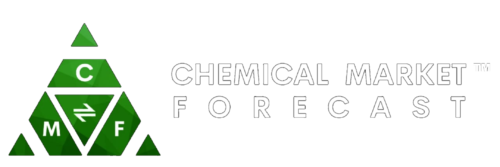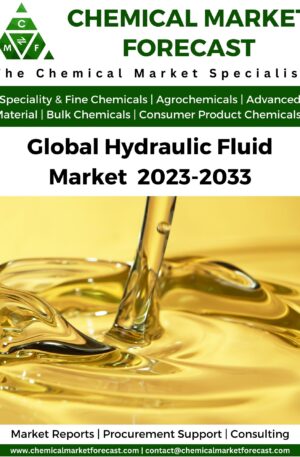Global Acrylic Emulsions Market
The global acrylic emulsions market is experiencing significant growth due to the increasing demand for eco-friendly and sustainable products in various applications, such as adhesives, coatings, and textiles. Acrylic emulsions are water-based polymers that are made by emulsifying acrylic polymers in water. They offer various benefits, such as low VOC emissions, excellent adhesion, and water resistance, which make them an attractive option for various industries.
The market is primarily driven by the growth in the construction industry and the increasing demand for adhesives and coatings in various end-use applications. The growing need for high-performance coatings in the automotive and industrial sectors is also driving the market growth. The market is further boosted by the increasing demand for sustainable and eco-friendly products, as acrylic emulsions are known for their low VOC emissions and eco-friendliness.
The construction industry is the major end-use application for acrylic emulsions, accounting for around 40% of the global market. The increasing demand for acrylic emulsion-based paints and coatings in construction applications, such as walls, ceilings, and roofs, is driving the market growth. The rise in infrastructure development activities in developing countries, such as China and India, is also contributing to the growth of the market.
The automotive industry is another significant end-use application for acrylic emulsions. The demand for high-performance coatings for automotive parts, such as bumpers, mirrors, and door handles, is driving the market growth. Acrylic emulsions offer excellent adhesion, weather resistance, and gloss retention, making them an ideal choice for automotive coatings. The growing trend towards eco-friendly and sustainable coatings in the automotive industry is also contributing to the growth of the market.
The textile industry is another major end-use application for acrylic emulsions. Acrylic emulsions are used as binders in textile applications, such as carpet backings, non-woven fabrics, and technical textiles. The growing demand for eco-friendly and sustainable textiles is driving the market growth. Acrylic emulsions offer excellent water resistance, adhesion, and durability, making them an attractive option for textile applications.
Geographically, the Asia-Pacific region dominates the global acrylic emulsions market, accounting for around 45% of the market share. The increasing demand for acrylic emulsions in the construction and automotive industries in countries, such as China, India, and Japan, is driving the market growth. The rise in infrastructure development activities and increasing urbanization in the region is also contributing to the growth of the market.
The key players operating in the acrylic emulsions market include BASF SE, Arkema SA, Dow Chemical Company, DIC Corporation, Celanese Corporation, Clariant AG, Wacker Chemie AG, and Synthomer Plc, among others. These companies are focusing on new product launches, collaborations, and acquisitions to strengthen their market position. For instance, in March 2020, BASF launched a new acrylic emulsion called Acronal® PRO 770, which offers high gloss and low VOC emissions, making it an ideal choice for eco-friendly coatings.
In conclusion, the global acrylic emulsions market is witnessing significant growth due to the increasing demand for eco-friendly and sustainable products in various applications. The market is primarily driven by the growth in the construction industry, the increasing demand for high-performance coatings in the automotive and industrial sectors, and the growing need for sustainable and eco-friendly products. The Asia-Pacific region dominates the market, and key players are focusing on new product launches and collaborations to strengthen their market position.
TABLE OF CONTENT
Global Acrylic Emulsions Market Report
1 Market Introduction of Global Acrylic Emulsions Market Report
2 Market Segmentation of Acrylic Emulsions Market Report
2.1 Acrylic Emulsions Market Segmentation By Region
2.2 Acrylic Emulsions Market Segmentation By Type
2.3 Acrylic Emulsions Market Segmentation By Crop Type
3 Cost Structure of Global Acrylic Emulsions Market Report
4 Country Analysis of Global Acrylic Emulsions Market Report
4.1 China
4.1.1 Acrylic Emulsions Market Size in China
4.1.2 Acrylic Emulsions Market Trends & Analysis in China
4.1.3 Key Acrylic Emulsions companies in China
4.1.4 Regulatory Framework of Acrylic Emulsions Market in China
4.2 Germany
4.2.1 Acrylic Emulsions Market Size in Germany
4.2.2 Acrylic Emulsions Market Trends & Analysis in Germany
4.2.3 Key Acrylic Emulsions companies in Germany
4.2.4 Regulatory Framework of Acrylic Emulsions Market in Germany
4.3 France
4.3.1 Acrylic Emulsions Market Size in France
4.3.2 Acrylic Emulsions Market Trends & Analysis in France
4.3.3 Key Acrylic Emulsions companies in France
4.3.4 Regulatory Framework of Acrylic Emulsions Market in France
4.4 Italy
4.4.1 Acrylic Emulsions Market Size in Italy
4.4.2 Acrylic Emulsions Market Trends & Analysis in Italy
4.4.3 Key Acrylic Emulsions companies in Italy
4.4.4 Regulatory Framework of Acrylic Emulsions Market in Italy
4.5 Netherland
4.5.1 Acrylic Emulsions Market Size in Netherland
4.5.2 Acrylic Emulsions Market Trends & Analysis in Netherland
4.5.3 Key Acrylic Emulsions companies in Netherland
4.5.4 Regulatory Framework of Acrylic Emulsions Market in Netherland
4.6 Russia
4.6.1 Acrylic Emulsions Market Size in Russia
4.6.2 Acrylic Emulsions Market Trends & Analysis in Russia
4.6.3 Key Acrylic Emulsions companies in Russia
4.6.4 Regulatory Framework of Acrylic Emulsions Market in Russia
4.7 Canada
4.7.1 Acrylic Emulsions Market Size in Canada
4.7.2 Acrylic Emulsions Market Trends & Analysis in Canada
4.7.3 Key Acrylic Emulsions companies in Canada
4.7.4 Regulatory Framework of Acrylic Emulsions Market in Canada
4.8 Mexico
4.8.1 Acrylic Emulsions Market Size in Mexico
4.8.2 Acrylic Emulsions Market Trends & Analysis in Mexico
4.8.3 Key Acrylic Emulsions companies in Mexico
4.8.4 Regulatory Framework of Acrylic Emulsions Market in Mexico
4.9 Singapore
4.9.1 Acrylic Emulsions Market Size in Singapore
4.9.2 Acrylic Emulsions Market Trends & Analysis in Singapore
4.9.3 Key Acrylic Emulsions companies in Singapore
4.9.4 Regulatory Framework of Acrylic Emulsions Market in Singapore
4.10 United Kingdom
4.10.1 Acrylic Emulsions Market Size in United Kingdom
4.10.2 Acrylic Emulsions Market Trends & Analysis in United Kingdom
4.10.3 Key Acrylic Emulsions companies in United Kingdom
4.10.4 Regulatory Framework of Acrylic Emulsions Market in United Kingdom
4.11 Switzerland
4.11.1 Market Size in Switzerland
4.11.2 Market Trends & Analysis in Switzerland
4.11.3 Key Acrylic Emulsions companies in Switzerland
4.11.4 Regulatory Framework of Acrylic Emulsions Market in Switzerland
4.12 Brazil
4.12.1 Market Size in Brazil
4.12.2 Market Trends & Analysis in Brazil
4.12.3 Key Acrylic Emulsions companies in Brazil
4.12.4 Regulatory Framework of Acrylic Emulsions Market in Brazil
4.13 USA
4.13.1 Market Size in US
4.13.2 Market Trends & Analysis in US
4.13.3 Key Acrylic Emulsions companies in US
4.13.4 Regulatory Framework of Acrylic Emulsions Market in US
4.14 Japan
4.14.1 Market Size in Japan
4.14.2 Market Trends & Analysis in Japan
4.14.3 Key Acrylic Emulsions companies in Japan
4.14.4 Regulatory Framework of Acrylic Emulsions Market in Japan
4.15 South Korea
4.15.1 Market Size in South Korea
4.15.2 Market Trends & Analysis in South Korea
4.15.3 Key Acrylic Emulsions companies in South Korea
4.15.4 Regulatory Framework of Acrylic Emulsions Market in South Korea
4.16 India
4.16.1 Market Size in India
4.16.2 Market Trends & Analysis in India
4.16.3 Key Acrylic Emulsions companies in India
4.16.4 Regulatory Framework of Acrylic Emulsions Market in India
4.17 Thailand
4.17.1 Market Size in Thailand
4.17.2 Market Trends & Analysis in Thailand
4.17.3 Key Acrylic Emulsions companies in Thailand
4.17.4 Regulatory Framework of Acrylic Emulsions Market in Thailand
4.18 Russia
4.18.1 Market Size in Russia
4.18.2 Market Trends & Analysis in Russia
4.18.3 Key Acrylic Emulsions companies in Russia
4.18.4 Regulatory Framework of Acrylic Emulsions Market in Russia
4.19 Malaysia
4.19.1 Market Size in Malaysia
4.19.2 Market Trends & Analysis in Malaysia
4.19.3 Key Acrylic Emulsions companies in Malaysia
4.19.4 Regulatory Framework of Acrylic Emulsions Market in Malaysia
4.20 Saudi Arabia
4.20.1 Market Size in Saudi Arabia
4.20.2 Market Trends & Analysis in Saudi Arabia
4.20.3 Key Acrylic Emulsions companies in Saudi Arabia
4.20.4 Regulatory Framework of Acrylic Emulsions Market in Saudi Arabia
5 Acrylic Emulsions Market Trends
5.1 Acrylic Emulsions Market Trends- Key Drivers
5.2 Acrylic Emulsions Market Trends- Key Restraints
5.3 Acrylic Emulsions Market Trends- Key Challenges
5.4 Porter’s Five Forces Analysis of Acrylic Emulsions Market
5.5 PEST Analysis- Acrylic Emulsions Market
6 Acrylic Emulsions Market Forecast
6.1 Acrylic Emulsions Market Forecast By Region
6.1.1 North America
6.1.2 Europe
6.1.3 APAC
6.1.4 Middle East
6.1.5 ROW
6.2 Acrylic Emulsions Market Forecast By Type
6.2.1 Fertilizer
6.2.2 Pesticide
6.3 Acrylic Emulsions Market Forecast By Crop Type
6.3.1 Fruits & Vegetables
6.3.2 Oilseed and Pulses
6.3.3 Cereals & Grains
6.3.4 Other
7 Supply Chain of the Acrylic Emulsions Market Analysis
8 Opportunity Analysis
9 Scenario Analysis
10 Key Company Profiles
11 Strategic Conclusions – Acrylic Emulsions Market Report
12 Abbreviations used in Acrylic Emulsions Market Report






Reviews
There are no reviews yet.